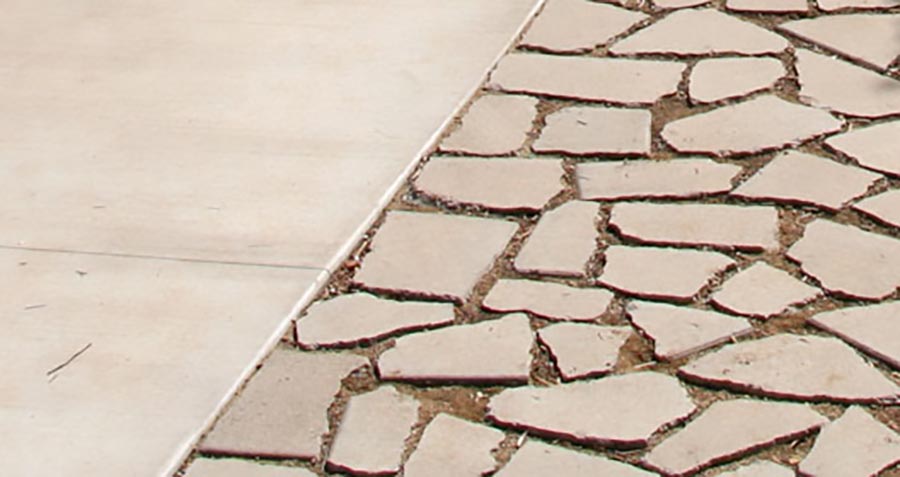Breaking up the pavement around your home and in your community is pretty easy, but aside from having a good excuse to use a sledgehammer, why would you want to? The simple answer is that the more permeability we are able to create in our yards and urban environment, the healthier the watershed.
When water falls onto hardscape surfaces, it runs off into gutters, to storm drains, taking everything in its path directly to the ocean. The single highest source of water pollution is this urban run-off. Additionally, when we allow water to filter down into the earth, we help restore our local ground water supply, which means less imported water; so increased permeability means more water and cleaner water.
Increasing the permeability in your garden and community can be easy and fun. There are several choices, from special permeable pavement, to brick and cobblestones, to just taking that sledgehammer to a large concrete slab, just make sure you have the property owner’s permission before you go busting up anything!
-
Take a look around
Survey your property for areas where concrete or asphalt can be revamped or removed. Consider patios, walkways, and driveways. If you have a community project in mind, look for places where trees can be added by cutting tree wells into sidewalks (yes, you can do this!). Check out our amazing Citizen Foresters, Katherine McNenny and Gabrielle Newmark, of Industrial District Green and see what they have done in their neighborhood. http://www.industrialdistrictgreen.org/
-
Choices, choices, choices
You can break up concrete and lay out broken pieces or large stone slabs in a sort of puzzle-like fashion. You can cut narrow strips across your driveway or a larger section down the center. You can install a trench drain or permeable pavers, or checker-board some bricks. You can pull up concrete or asphalt and add trees and native plant gardens. The options are endless!
-
Permeable Products
There are two basic categories. One looks and wears just like concrete or asphalt, but allows water to pass through the pavement and into a rock reservoir below, which filters it before it enters the surrounding soil.
The other group of materials includes various plastic or concrete grids and pavers. Products of this type allow grass or groundcover to grow in the gaps and can be sturdy enough for cars, depending on the product.
For either type, you will need to remove the existing concrete or asphalt and then follow the instructions for your chosen pavement – or hire a professional to install it.
-
Nooks and crannies
Once you’ve decided on what hardscape will remain and which will go, you’ll want to fill in the spaces with something to match your new style. Bark mulch and plants are a fabulous option and create a cooling effect. For plant ideas, click here. Choose plants that are 2” or shorter.
You can also mulch with recycled, tumbled glass pieces, small pebbles, decomposed granite or polished river rock. Local building supply companies have extensive choices providing an endless array of colors, textures and styles. Have a rustic cottage? Try bricks with creeping thyme. Is your apartment building more modern? Talk with your landlord about filling in those sidewalk cut outs with brightly colored glass pieces.
-
Dig Alert and other considerations
Before you cut, dig or break up anything, make sure there are no underground utilities. Look for your water and gas mains for a good idea of where your pipes may be, and contact www.digalert.org to mark lines up to the meters.
Next, check your soil permeability. Go to http://www.treepeople.org/soil-percolation-rates. Remember, if you’re collecting a large amount of water, make sure that you stay 5’ from the foundation.
-
All over this Land
If we really want LA to be a sustainable city, then it is going to take all of us doing something to make that happen. Anyone in Los Angeles county can train to be a Citizen Forester. TreePeople supplies all training, information and support needed to organize volunteer tree plantings and follow-up tree care events.
So look around your community for opportunities. Wouldn’t you like to live on a tree-lined street? What about the sidewalks with no trees around where you work? Is your child’s school campus covered in nothing but asphalt? Become a Citizen Forester, cut open some of that hardscape and give our city the many benefits of trees and rainwater capture. Go to http://www.treepeople.org/how-citizen-forestry-works and hammer out a solution all over this land!

